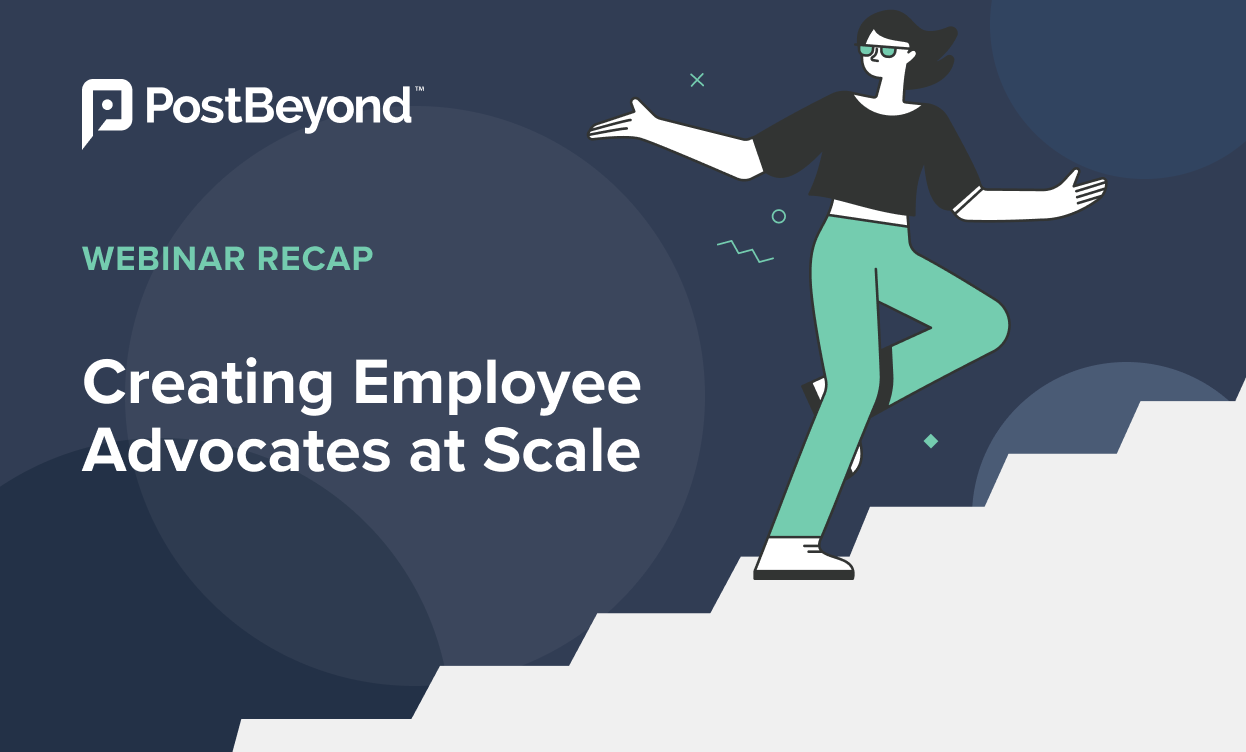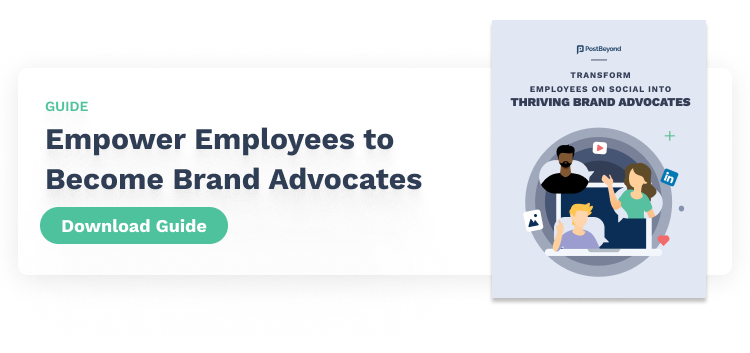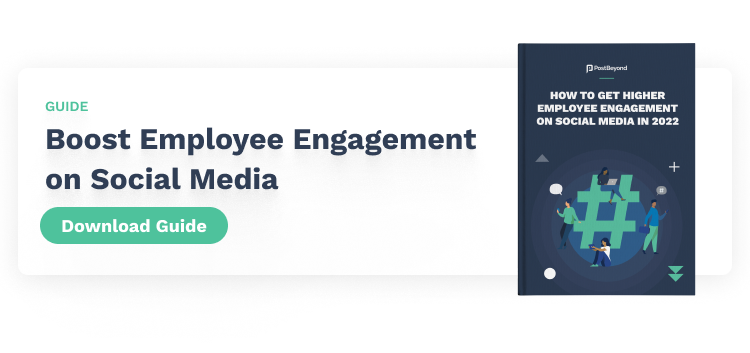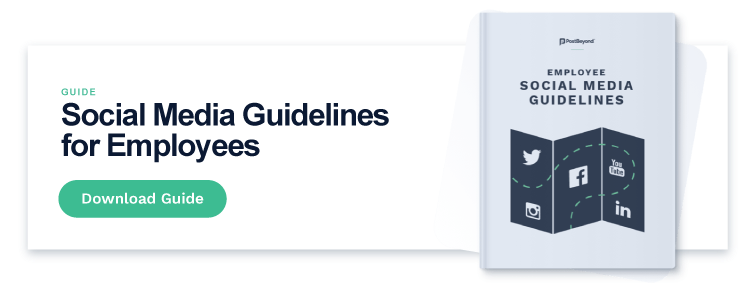One of the biggest challenges of running an employee advocacy program is growing it. How do we get more of our employees to join? How can we keep our current advocates motivated? And how do we break through blockers stopping our advocates from doing more?
Marketers driving employee advocacy programs will inevitably confront these challenges. But the good news is that we spoke to someone who overcame them.
Last week, we got together with Richard Wachtel, the Social Media Lead at TE Connectivity, to learn how he grew his employee advocacy program.
You can catch the full recording of the webinar here, but read on for the highlights!
Key Learning #1: Emphasize Convenience

Be it at the start of your program or later on, you’ll deal with employee concerns. It could range from nervousness about regularly posting on social media to blockers like a lack of time.
One of the first things Richard did was gather input from his current and potential advocates. He wanted to understand the exact ‘pain points’ stopping employees joining the program.
Some employees were nervous about regularly sharing things on social media. They weren’t sure of what the company allowed or prohibited. Others were worried that learning on a new platform wasn’t feasible.
Richard took each of these – as he called them – “pain points” and solved them with a clear emphasis on convenience and ease-of-use.
Using demo sessions, Richard showed his team that PostBeyond was an easy to use platform. He also got his advocates early access to PostBeyond so that they could familiarize themselves with the platform.
When it came to addressing nervousness, Richard leveraged different processes to help his advocates feel comfortable and empowered.
For example, he assured them that the content on PostBeyond was pre-approved and totally in line with company policies. Moreover, Richard also provided the team with pre-written captions in case they weren’t sure of what to write for posts.
In a way, Richard made employee advocacy a ‘white glove’ experience for the employees who were just getting their toes wet. However, Richard also set up processes to empower those who wanted to do more. For example, he encouraged employees to write their own posts instead of only relying on the pre-written captions.
Key Learning #2: Tie Back to KPIs

With an employee advocacy program, you’re asking for people’s time and effort.
Richard found that the best way to drive employee commitment was to tie employee advocacy back to the employee’s and their department’s KPIs.
For example, Richard showed his sales executives how much ROI the company could earn if the sales team committed to employee advocacy. Likewise, Richard walked the marketing team through how they can measure the impact of their campaigns through employee advocacy.
But in addition to showing the value, Richard also spoke about the need to closely partner with each department and help them achieve their goals.
For example, TE Connectivity’s HR team was focused on retaining employees. So, Richard worked with the HR team to tune TE’s employee advocacy program to support their goals. In doing so, Richard closely worked with TE’s talent acquisition people.
Not only did the program help the HR team, but moving forward, the HR team is making the employee advocacy program a part of the onboarding process. In other words, many new TE employees are becoming advocates from their first day at the company.
The lesson here is that by partnering with each department, you get both their support and a solid runway for long-term growth in your program.
Richard also made a point about prizes and rewards. While they are nice to have, he found that the best way to mobilize employees was tying advocacy back to their KPIs. Basically, show your employees who advocacy can support their growth at the company.
Key Learning #3: Focus on Your Advocates

Richard discussed how he continually engaged his advocates by focusing on their interests.
For example, he didn’t limit TE’s employee advocacy program to only sharing branded content. Rather, Richard built a varied mix with unbranded content, and on top of that, took the input of his advocates when doing so.
Richard also ensured that the content resonated with his advocates. One example he brought up was how many of TE’s employee advocates are from the automotive segment. So, Richard brought in a lot of content that they could personally speak to.
He also encouraged his advocates to suggest content they find from the trade publications and other resources they regularly visit. Not only did this help create a nice content mix, but it gave the advocates a say in the program.
In parallel to internal KPIs, it’s also important to link advocacy to personal branding.
Richard uses himself as an example to his advocates to show how the program can help them grow both within the company and beyond. Like him, they can use employee advocacy to grow their own networks, build their thought leadership and much more.
Finally, Richard personally reached out to TE Connectivity employees located in different parts of the world and of different backgrounds. TE Connectivity was a global company, so Richard saw that growth across every key area was important.
Top Audience Questions
“How do you find high-quality, unbranded content?”
Richard: “I read my Twitter feed. I watch the news every day. I have a list of websites that I regularly visit to find content. I also encourage the advocates to check out the trade publications they normally read and share or suggest the content they find interesting. I also look through my LinkedIn feed to see what my connections are sharing.”
“I really think about who’s using the platform. So, for example, we have an automotive group on PostBeyond and they form the bulk of our users. I look for content that would be of interest to that group. We also, as a company, have our own growth drivers and growth topics that we want to focus on. I look for that type of content as well, and I’ve seen great success with that.”
“What is the best way to get employees started with sharing? I send internal newsletters and easy-to-share links, but my team members don’t engage.”
Richard: “Going to your employees and asking, ‘Hey, what are your pain points and how do I solve these problems?’ is a good start. Present a solution to their problems.”
“For example, one of the things everybody was nervous about was sharing different types of content to their social media profiles. So, when I pitched the platform, I said, ‘This is brand-approved content that is safe to share on your social media profiles,’ and that removed the nervousness on the part of our employees.”
“I also worked with our employees to ease them into employee advocacy – I didn’t push them. I checked back with them and asked, ‘Does this solve the issue?’ ‘What can we adjust?’ and so on. I also sent a newsletter every week with at least four different pieces of content – two branded and two third-party – so that they’re getting a diverse range of options to share.”
“Do you talk to employees about how advocacy will build their personal brand, and if so, how do you frame it?”
“That was one of the key points I really wanted to highlight to our employees. I explained to them that their personal brand is important and how sharing content will help them build it.”
“As for how I frame it: I shared my personal experiences plus testimonials from other people using the platform. I share those examples as success stories so that other people can see the benefits of using our employee advocacy platform.”








